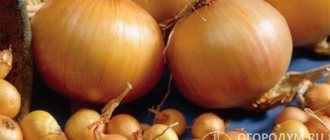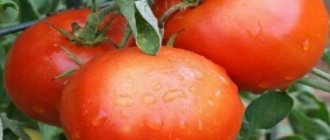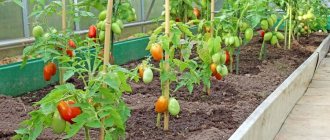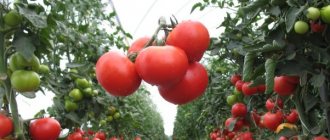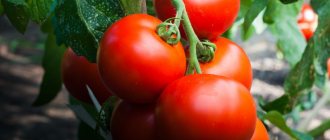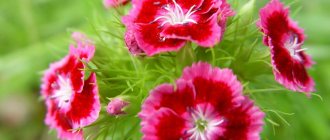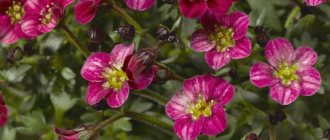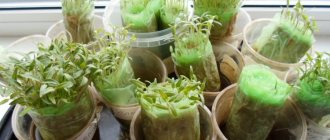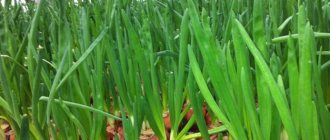Author's rating
Author of the article
Yakov Pavlovich
Professor, Head of the Department of Vegetable Growing
Articles written
153
The global assortment of popular onion varieties is constantly updated, but one position has not lost its relevance for a long time - almost half a century. The Stuttgarter Riesen onion variety remains consistently popular. Every year its seeds (nigella) and sets are actively bought up by vegetable growers. The Stuttgarter Riesen onion is cultivated by large agricultural farms and amateur gardeners.
Selection history and growing regions
The Stuttgarter Riesen onion was bred by German breeders in the last century. The variety is sometimes considered Dutch because that country has a license to produce onion sets. Selection success has spread widely across different countries, but not everyone is able to reproduce the name without errors, so sometimes it is passed on as Stuttgarter Riesen or Stuttgarten Riesen. There is also a translated name - Stuttgart Giant (Giant from Stuttgart).
The German city of Stuttgart is located in a continental climate zone, contrasting in nature. The genes of onions originating from this area contain the highest ecological plasticity - the ability to develop in different conditions. In 1981, the Stuttgarter Riesen onion was accepted for varietal testing in Russia. Since 1995, it has been included in the Russian State Register (as Stuttgarter Riesen) and is recommended for cultivation in four regions: Central, Volga-Vyatka, Middle Volga and Eastern Siberia. The real geography is much wider. The Stutagrer Risen bow is in demand in many Russian regions and in the Near Abroad.
Description and characteristics of the variety
Stuttgarter Riesen is a non-hybrid variety with stable characteristics.
Purpose
The main purpose of the Stuttgarter Riesen variety is to produce onions in a two-year culture (from sets), for storage and consumption until the end of spring. You can also grow it for greenery, but single-bud bulbs produce a feather that is not too lush (there are varieties that are more productive for greenery).
It is possible to obtain bulbs in one year - by direct sowing in the ground or by a more reliable seedling method. But they grow rather small, although they are stored well in winter.
INTERESTING! For annual crops, there are specialized, much more productive varieties.
Time of ripening
The Stuttgarter Riesen variety is early ripening. The turnip is ready for harvesting 66-73 (occasionally up to 85) days from the beginning of the growing season. The heads have time to form and ripen even in regions with a short period of summer heat. The feather grows at an average speed.
Bulbs
The turnip is single-primed (the feather comes out from one point), formed one at a time in a nest. The Stuttgarter Riesen variety does not have a tendency towards “nepotism”, and this works for large fruit.
Main parameters:
- the average weight of a turnip during industrial cultivation is determined in the range of 48-94 g;
- the mass of the bulb in private gardens is 120-150 g;
- Stuttgarter's shape is onion (flattened at the top and bottom) or rounded-flat;
- the color of the integumentary scales is golden-brown;
- the fit of the husk is tight;
- inner scales white;
- the consistency is strong, without looseness;
- the taste is sharp, the juiciness is average.
Expert opinion
Stanislav Pavlovich
Gardener with 17 years of experience and our expert
Ask a Question
INTERESTING! The flattened shape of the bulb and the depression in the “neck” area cause moisture retention. This is a provoking factor for the development of rot.
Sustainability
The Stuttgarter Riesen onion, being a rather old variety, does not have genetic resistance to downy mildew (downy mildew), neck rot, or onion fly damage. If plantings are attacked by diseases and pests, they can cause depletion or death of plants, significantly reduce productivity, and impair shelf life.
Turnip yield
The industrial productivity of Stuttgarter Riesen onions is from 100 to 350 kg per hundred square meters. This figure is higher than that of the Strigunovsky local variety (the difference can reach 70 kg per hundred square meters, under equal growing conditions). In private gardens, Stuttgarter's yield reaches 8 kg/sq.m. m (800 kg per hundred square meters).
Safety
At harvest in Stuttgarter, only half of the bulbs fully ripen (up to 55%). But the rest ripen successfully after harvesting (if they are not affected by diseases) - up to 96%. Ripened onion and Stuttgarter Riesen sets are perfectly stored until the end of spring.
INTERESTING! Being deeply dormant in winter, the bulbs are able to wake up under the influence of moisture and heat - for successful forcing of greenery.
Table: pros and cons of the Stuttgarter Riesen variety
| Advantages | Flaws |
| ecological plasticity (all regions) | strong susceptibility to peronosporosis |
| long-term stability of the genotype | <instability to neck rot |
| availability of planting material | susceptibility to onion fly |
| reasonable cost of onion sets | "pit" at the top of the bulb |
| precocity | quite thick neck |
| universal purpose (turnip, feather) | the need for ripening for storage |
| good yield | bitter-spicy taste |
| decent bulb weight | onions are difficult to peel from scales |
| excellent keeping quality (until spring) | low yield of feathers for “green stuff” |
| lots of vitamin C | low efficiency in annual culture |
| you can get your own seeds (not a hybrid) |
See also How to properly prepare and plant onions so that the bulbs are large
When to collect?
The readiness of onions for harvesting is indicated by dried, limp feathers. Readiness is indicated by drying of the neck.
There is no need to keep the crop in the ground:
- If the weather forecast is bad, it is better to dig it up in advance and lay it out to dry.
- For cleaning, choose a sunny day; it’s good if the weather is dry with a light breeze.
The bulbs are dug up and laid out on the bed for airing. From one square you can get up to 6-8 kg of onions.
Separate materials on the pages of our website provide a description of the best varieties of onions. These are: Bessonovsky, Snowball, Anzur, Parade, Karatalsky, Russian size, Strigunovsky, Zolotisty Semko, Elan and Stuttgarter Stanfield. In these articles you will find complete information about the cultivation and characteristics of the crop.
Planting dates and patterns
The best predecessors of onions in crop rotation are cabbage, cucumbers, zucchini, beans, peas, root vegetables, green manure, and strawberries. It is permissible to plant onions after potatoes, peppers, and tomatoes. Onion plantings are located in well-lit areas.
A bed for Stuttgarter Riesen onions is prepared in the fall, filling it with a bucket of humus and a glass of ash for each square meter before digging. If the acidity of the soil is high, then it is advisable to carry out deacidification for the previous crop. In the spring, 4-6 days before planting onions, the beds are watered with a biofungicide solution (Trichophyte, Trichocin, Trichoderma Veride, Sporobacterin, Fitosporin).
From seeds
Stuttgarter Riesen is planted with seeds (nigella) to produce onion sets. Commercial vegetable turnips, as a rule, do not grow in one season: the diameter of the bulbs rarely exceeds 3 cm.
Expert opinion
Stanislav Pavlovich
Gardener with 17 years of experience and our expert
Ask a Question
INTERESTING! Onion seeds are also sown for their delicate, vitamin-rich greens, but the feather of the Stuttgarter variety will not grow large enough. There are special varieties from the “Onion for greens” series.
It is advisable to sow in the ground as early as possible in order to fully utilize the spring soil moisture. It is important to grow strong greens before possible outbreaks of downy mildew and onion fly activity. In the Middle Zone, the North-West, Siberia and the Urals, onions can be sown as soon as the snow melts - from about mid-April. Sowing nigella for seeding is possible until the end of May, and to obtain green feathers - until August. In the southern regions, earlier dates are practiced.
Before sowing, nigella is treated with a biofungicide solution (Fitosporin, Sporobacterin) to prevent disease. Onion seeds are slow to germinate, so it is useful to soak them in a germination stimulator (for example, Zircon).
The surface of the ridge is carefully leveled. The rows are carried out in moist soil, every 10-15 cm. Nigella is sown densely, using up to 12 g of seeds per 1 square meter. m. Sometimes a spot sowing pattern of 8X1.5 cm is maintained.
Stuttgarter seeds are planted to a depth of 10-20 mm. The bed is lightly rolled or patted down on top, then mulched (with light compost, deoxidized peat) with a layer of up to 1.5 cm.
Pre-winter sowing of the Stuttgarter Riesen variety is also possible.
From seedlings
Special varieties have been bred for seedling cultivation of onion turnips, and Stuttgarter Riesen does not belong to this group. But this option is quite possible for him.
Nigella is sown for seedlings at home on March 10-20. The soil should be as loose as possible (such as “For cacti and succulents”), with the addition of sand. Sowing is done in boxes or nurseries about 10 cm high, with drainage holes for moisture drainage. Seeds are placed thicker (up to 1 g per pot with a diameter of 8-10 cm), deepening them by 1 cm. Seedlings need bright light. They are kept at a temperature no higher than +25 degrees during the day and no more than +15 at night. Plants are not afraid of cold weather.
Seedlings are planted in open ground at the age of 55-70 days, after May 15, after hardening off the plants. When transplanting, the tips of the roots and tops of the onion are trimmed. Plants are placed in a bed according to a 15x8 cm pattern, without burial; water carefully. The root system should not be bent when planting.
From onion sets
The variety Stuttgarter Riesen is recommended for spring planting of sets. When planted before winter, there is a risk of stemming (fading into color).
In spring, planting material is heated for 10-15 days on a stove or near a radiator. Before planting, the seedlings are soaked in a biofungicide solution (Sporobacterin, Fitosporin). If the bulbs are infected with thrips, they are disinfected by heating them for 10 minutes in water at a temperature of +45 degrees, then immediately cooling them in cold water.
To obtain turnips, onions of the Stuttgarter Riesen variety are planted outside in April - May, and to collect greens - at any time in spring or summer. It is not recommended to pluck the feathers from plants grown for large bulbs. The layout of the turnip sets is 25x10 cm; They plant much thicker greenery (5x5 cm). The “shoulders” of the bulbs are slightly buried in the soil.
INTERESTING! You can plant onion sets according to a 12x5 cm pattern, and later thin them out, removing half the plants to the green feather.
Stuttgarter Risen onions from seeds - three ways
To get a full onion harvest in just one season, gardeners use three proven methods:
1. Spring direct sowing. In order for the crop to ripen by the end of the season, it is necessary to plant the seeds in early spring. The culture easily tolerates frost down to -5 °C. 2. Pre-winter sowing. Seeds are planted in beds with the onset of the first autumn frosts. So that they do not have time to sprout. 3. Planting seedlings. Seeds are planted in containers at the end of February or March. Seedlings need proper care and additional lighting.
Planting onions with seeds
To grow Stuttgarter Riesen onions through seeds, it is better to use high beds located in a sunny place. The culture loves slightly alkaline and nutritious soil. The beds should be prepared in the fall by adding humus and mineral supplements. Onions cannot be planted in last year's area. It is better to choose beds after tomatoes, potatoes, cucumbers, and zucchini.
Caring for onions in open ground
In the phase of feather growth, onions need regular watering, fertilizing with a predominance of nitrogen, repelling onion flies and treatment with biological products to prevent diseases. When the heads are formed, watering is reduced and then stopped completely.
Watering schedule
Before filling the bulbs, the beds should be constantly moist (in moderation). In the northern regions, the Stuttgarter Riesen onion needs three to four waterings per season, in the central regions - from 4 to 8 times, in the south - up to 15 times. Approximately 3-4 weeks before harvesting (one and a half months after germination), water supply is stopped.
See also Features of growing and caring for onions Batun
Expert opinion
Stanislav Pavlovich
Gardener with 17 years of experience and our expert
Ask a Question
IMPORTANT! It is recommended to water the Stuttgarter Riesen variety by flooding (without sprinkling) to protect the feather from an outbreak of peronosporosis.
Loosening the soil and weeding
The plantings must not be overgrown with weeds. Early weeding is especially important for nigella onions and seedlings. Periodic (the day after watering) shallow loosening of row spacing helps conserve moisture.
Feeding
Onions do not like high concentrations of minerals in the soil solution. It is advisable to feed it little by little, giving preference to natural fertilizers - manure, herbal infusion, wood ash. For 1 sq. m distribute 4-5 liters of nutrient fluid.
Fertilizing is given in the first 35-40 days of the growing season, immediately after watering. Alternate the application of manure (diluted with water 1:10) and wood ash infusion (500 g per bucket of water). The manure solution can be replaced with herbal infusion or Urea (1 tbsp per bucket of water), and the ash with phosphorus-potassium fertilizer.
Approximate feeding schedule for Stuttgarter Riesen onions:
- In the growth phase of the 2nd leaf - manure (Urea) + 1 tsp. Magnesium sulfate per bucket of solution.
- A week later - ash.
- In the first ten days of June the cycle is repeated.
Disease and pest control
To prevent diseases, onion plantings are watered weekly and sprayed with biofungicides (Sporobacterin, Baxis, Fitosporin). If the first signs of peronosporosis appear, modern chemical fungicides are used - Revus (waiting period 15 days), Consento (waiting period 21 days). Sometimes folk remedies help to contain the disease (dusting with ash; spraying with serum diluted in water 1:10).
The onion fly flies out at the time of flowering of dandelion and cherry. She lays eggs near the root collar of onion plants. Soon, light-colored larvae (up to 1 cm long) hatch, penetrate into the bulbs and feed there. The foliage withers, the onions rot. To repel onion flies, wormwood tops are laid out between the rows or the ground is sprinkled with tobacco dust. To get rid of worms, water the onion with a salt solution (10 g per 10 liters of water).
Small thrips larvae that feed on onion feathers and leave streak-like marks are destroyed by spraying with the biological preparation Fitoverm.
Planting with seeds
This method has a number of advantages. If you buy seeds, they will cost you much less than sowing. This is especially beneficial for large planting areas. They do not require much space, and they are not picky about storage temperatures. The seeds are free of larvae or other disease-promoting pests.
Seeds must be planted after August 15, but no later than the 25th of the month. It’s a good idea to fertilize the soil with humus. Seeds are planted strictly observing the following rules:
- They are soaked for a day in water or a weak solution of potassium permanganate and dried.
- Small grooves are made in the soil - optimally 3 cm, at a distance of 35 cm from each other.
- Seeds are sown in the grooves quite densely to guarantee germination. To prevent the bed from being washed away, lightly press down the soil.
- Watering should not be abundant to avoid the formation of a crust that is undesirable for the sprouts.
- In winter, the soil is mulched with humus, straw, peat or sawdust. When the snow melts, the mulch is removed and the seedlings are fed with fertilizer containing nitrogen.
- If the seedlings are dense, the distance between the onions is 7 cm, removing unnecessary sprouts.
Harvest and storage
The ripening of onions of the Stuttgarter Riesen variety occurs 2-2.5 months after the first greenery comes out. The heads are removed in dry weather, when the neck becomes thinner and the feather lies down and begins to dry out. The onion, without cutting off the remaining tops, is laid out in a thin layer for ripening in a warm room (preferably with a temperature of +25 to +30 degrees). After 20 days, the heads are placed in nets or nylon stockings; stored in a suspended state at room temperature; protect from dampness and sudden temperature changes.
IMPORTANT! If possible, the Stuttgarter Riesen variety is kept at a temperature of +42 to +45 degrees for the first 12 hours after harvesting: this will reduce neck rot.
Feeding Personalities
Gardeners, in order to get a good harvest, use the effective fertilizer composition Biogrow . This fertilizer is used for various plants, does not contain harmful chemicals, and can increase yields by 50 percent. It should be added to the soil a couple of times during the season.
Fertilizer Biogrow
Feeding from seeds
This method can be used in autumn or early spring. In a previously prepared area, furrows are made across them, between which there is a distance of about fifteen cm. The sowing depth is two centimeters, the clearance is up to one and a half . After finishing sowing, the soil needs to be slightly compacted.
You should not water the beds with crops right away, so that the soil does not form a crust, which will be quite difficult for young shoots to break through. As soon as the sprouts appear, the plantings need to be thinned out .
Difficulties in growing
The Stuttgarter Riesen onion is demanding on soil fertility and moisture supply. On uncultivated lands, productivity will be low.
Susceptibility to fungal infections dictates the need for pesticide treatments (traditional methods of protection and biofungicides do not always help with this variety). Because of this, it is difficult to talk about the desired ecological purity of the crop and territory.
What ails culture
Stuttgarter Riesen is distinguished by its immunity to damage by harmful insects and pathogenic microorganisms. It is rarely affected by diseases, including those that are typical for other varieties of vegetables - for example, powdery mildew. Sometimes crops are prone to infection with diseases, and most often troubles arise due to poor-quality seed material. To prevent problems associated with growing crops, you need to pay special attention to the choice of seeds and sets. In addition, before planting, it is recommended to treat the material with disinfecting solutions to get rid of pathogenic microorganisms.
The culture practically does not get sick and is not damaged
Breeding ways to solve problems
Specialists from the Netherlands (agricultural breeders) have developed an improved version - the non-hybrid variety Stuttgarter-Stanfield (Stanfield), zoned in Russia since 2015 (based on the results of tests in the Central region). It is devoid of many of the disadvantages of the original form, maintaining good performance in terms of yield and bulb size.
Varietal characteristics of Stuttgarter-Stanfield onions:
- three-germ, which means a lush feather;
- thin “neck”;
- resistance to fungal infections;
- completion rate for harvesting – 88%, when ripening – almost 100%;
- the shape is less flat, closer to an ellipse;
- average bulb weight 85-100 g;
- industrial productivity of turnips is from 180 to 380 kg per hundred square meters.
Stuttgarter-Stanfield grows bulbs later (in the middle terms), so it is not a complete replacement for the original early variety. Future tests will show whether the new product will be able to displace the maternal form. The stable genetics of “old”, reliable varieties are not always ready to give up ground even in front of disease-resistant new forms.
Reviews from gardeners
Practicing vegetable growers with extensive experience note that it is profitable to grow Stuttgarter Riesen onions, but only with a high level of agricultural technology. The opportunity to get your own seeds and easy sowing is attractive. This allows you to reduce costs. This eliminates the risk of purchasing low-quality planting material. The variety grows successfully on natural fertilizers – manure and ash, without store-bought “chemicals”. Strict crop rotation and early planting help reduce the risk of fungal disease problems.
Previous
OnionsHow to grow perennial onions from seeds: planting and care rules
Next
OnionsThe onions have turned black and are rotting: causes and measures to combat rot in the garden bed
Selection of planting material
This onion can be grown both from sets and from seeds. The best quality is set grown in Holland. However, even after purchasing such a product, it must be carefully inspected for damage and signs of rot. Any fraction size is suitable, but then the planting time will be different.
Important! Before planting, any seed must be soaked in a weak solution of potassium permanganate.
Small sets should be planted in the fall for winter cultivation. It is better to plant the larger fraction in the spring. Onion seeds are also called “nigella”. They should be purchased only in specialized stores and be sure to pay attention to the expiration date.
